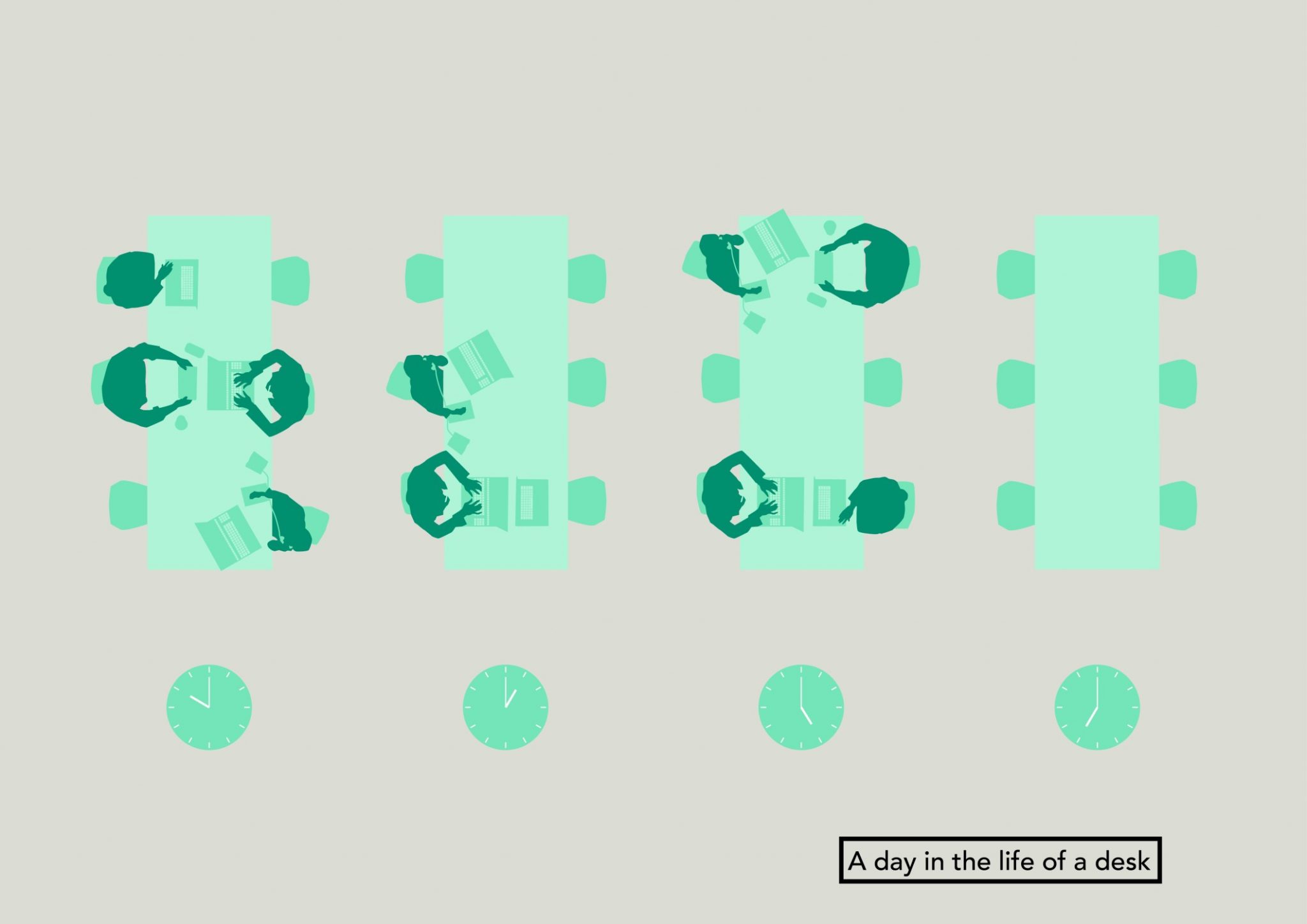As we anticipate an imminent return to work, BAA look at the implications for desks, the symbol of the workplace.
Much is being written at the moment about how and when we return to our offices.
BAA has spent some time contemplating the desk, the symbol of both the workplace and the way we locate ourselves within the office, whether we hot desk or home desk, share desk space or personalise it.
Currently, the desk is the key component in planning our emergence from lockdown and how we might use it to manage the social distance necessary for a safe return to work. But it’s easy to forget that even before lockdown we were already starting to question the future of the office, analysing the relative underuse of desk space in many offices in order to understand real-time occupational densities, rather than the maximum ones upon which so much office planning is predicated.

Looking at a desk in real-time to see how we used it before lockdown. With social distance our real-time working patterns will change and stretch, so what does this mean for the new workplace?
Office desk occupancy frequently works at around 60% relative to desk provision. Although the wholesale adoption of hot-desking theoretically acknowledges this pattern it is rarely streamlined in terms of raw space consumption within the office. Technology has proved itself beyond doubt during this period of mass working from home, but even before that, a mixture of flexible working or activities that took us out of the immediate office environment meant that working patterns were no longer subject to traditional 9 – 5 behaviours. How often did we, or will we, genuinely need to sit at our office desk?
Not only do we now need to formalise how and where we sit at work, but we will also need to adjust to office densities that are around 30% of their former levels – for an office that was formerly occupied at a density of 1 person per 7 square metres this now means an occupational density of 1 person per 20 square metres. We can’t make offices 3 times larger, but we do need to find ways to accommodate the 70% of the workforce for whom social distancing measures may mean exclusion from a conventional fixed desk layout.
Shift work and agility look like they may be the norm for the foreseeable future. But we also need to think about formalising the informal relationship that we previously had with our desks. This means dealing with time, tidiness, and hygiene. In doing so we may just find that we all still fit in one space but that we’re clinging onto desk space that we never really needed.
